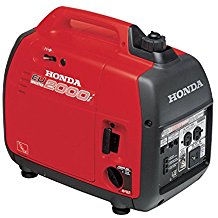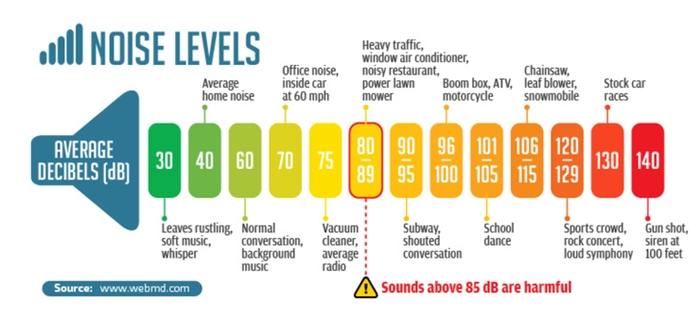Table of Contents
Generators
 A generator is a device that creates electricity from some other form of energy. In RV terms this usually means a gasoline powered generator, but they can also run on propane or diesel. Residential generators sometimes run on natural gas.
A generator is a device that creates electricity from some other form of energy. In RV terms this usually means a gasoline powered generator, but they can also run on propane or diesel. Residential generators sometimes run on natural gas.
Note: in some areas solar setups and wind turbines are also called “generators”. Portable “power stations” are sometimes, inaccurately, marketed as solar generators.
The most common built-in generator found in RVs is the Onan, now owned by Cummins.
The most common higher end portable generators are the Honda EU2000-series, inverter generator with Yamaha a close second.
The lower end is dominated by open-frame, non-inverter “contractor” gennies (Champion, most infamously), which are loud but cost much less for the wattage. Recently some inexpensive inverter generators have come to market, including the Harbor Freight Predator line. Lower-end generators may not be intended for repair, and repair parts may not be available.
Some have reported success with Honda and Yamaha clones like Wen (tested) or Kipor.
inverter generators
To understand the theoretical benefits of inverter generators we have to know how standard generators work.
Standard generators run the engine at a specific speed to get a stable 60Hz1) output frequency.
Typically, a United States portable generator runs at 3600 RPM, with 2 poles, for a design frequency of 60Hz.2)
Things that affect RPM (load changes, etc) will affect the output and can cause “dirty power” (varying frequency).
You get fluctuation of frequency and voltage as the load changes because the engine cannot respond immediately to the actual load change. There are regulators controlling the engine throttle that attempt to keep the engine at a fixed (design) speed, but it takes time for the engine to respond to new commands as it has to deal with varying fuel/air mixtures and combustion which aren't instantaneous.3)
Inverter generators reduce engine RPM for lower power demand, then use a more complex4) AC→ DC→ AC setup to ensure steady output regardless of engine RPM.5) As a result inverter generators
- output highly-consistent and stable power. This is unrelated to the the PSW vs MSW inverter issue; all generators output Pure Sine Wave because they make power from a spinning source.
- can be considerably quieter and use less fuel than standard generators at lower power levels.
- will make the ~same noise and have the ~same fuel consumption as standard gens at maximum rated power
- are typically lighter than standard gens, due to different internal design
- are typically more expensive than standard gens
etiquette
It is common to leave generators quiet in times of darkness, and to not run them when close to other campers.
charging batteries
Generators are not particularly well-suited to charging lead-acid batteries (flooded, sealed, AGM, etc) on their own. They work best in combination with solar; the generator handles Bulk charging and solar handles the long-duration, low-current Absorption and Float stages.
[Alternator charging + solar can do the same thing for about $950 less – Secessus]
If the generator is being used for some other purpose then by all means add on battery charging. But running a generator for hours at 5% capacity only for charging is not optimal.
Generators are well suited to charging lithium-chemistry batteries as that type can take current at all points of charging.
If you are considering a genny for use with an inverter/charger combo, perform due diligence beforehand. Some inverter/chargers prefer one type over the other:
Inverter chargers generally prefer conventional generator and not inverter generators. This is because they control the amount of power they pull from the generator just adjusting your island frequency. Inverter generators do not handle an external actor trying to adjust the frequency and will rigidly keep 50 or 60Hz until they trip. – therealrimwarren6)
but there are reports that other inverter/chargers are very picky about a stable 60Hz7) frequency.
efficient use
Generators generally have a minimum amount of wattage they can produce. This means that until you hit that minimum multiple loads can be run for “free”, speaking in terms of fuel consumption.
An example of an efficient use would be:
- start the generator in the morning when batteries are most depleted and can take the most current
- use your heavy loads at the same time as possible, up to the practical limit of the generator
- shut the genny down after the battery bank reaches Vabs and let solar handle Absorption and Float stages8)
Runtime means how long the generator will run a single fueling.
Some generators can be paralleled, or combined to make more power in tandem.
Fuel injected generators may offer better performance at altitude extremes.
The physical dimensions of the generator will need to fit in the space you have available. The weight needs to be something you can tolerate if it will not be permanently mounted somewhere.
Eco modes may allow fuel conservation at lower power outputs.
 Noise is rated in decibels (dB), traditionally measured at ~23' (7m) when running at full load. Read specs fully to see if a dB claim is made at idle, 1/4 load, or some non-standard distance. Very quiet generators allow normal conversation rather close by, and imperceptible9) outside the immediate campsite. Loud generators might be heard hammering away at a distance of 100yds+.
Noise is rated in decibels (dB), traditionally measured at ~23' (7m) when running at full load. Read specs fully to see if a dB claim is made at idle, 1/4 load, or some non-standard distance. Very quiet generators allow normal conversation rather close by, and imperceptible9) outside the immediate campsite. Loud generators might be heard hammering away at a distance of 100yds+.
maintenance
Generators typically require maintenance after initial break-in and every X hours thereafter. Read the manual for specific instructions, but recommendations are typically for oil changes after the first two hours then every 20 hours thereafter. The frequency of oil changes make make it worthwhile to watch oil-changing videos for each model under consideration. Remember to carry spare oil and a way to transport used oil to a recycle or disposal point.
Depending on design, air filters will require cleaning or replacement. Fuel filters and spark plugs re also replaced as needed or according to maintenance schedules.
Fuel left in an unused generator can leave residue resulting in poor (or no) performance. It is common to run the fuel out of the genny at the end of the camping season to avoid this residue. Fuel stabilization products like Sta-Bil may help reduce the problem.
cooling
Most portable generators used by 'dwellers are air-cooled; they use forced air across the engine and “power head”10) to cool them. For this reason the intake and exhaust vents must be unblocked, and the exterior panels must be on during operation for proper routing of airflow. Gens mounted in confined spaces (as in dedicated RV compartments) can present special cooling challenges.
The generator should be placed in shade11) when possible to keep it from heating up further from direct sun.
further reading
- Chinese genny megathread: 3000w Chinese Gensets Info

